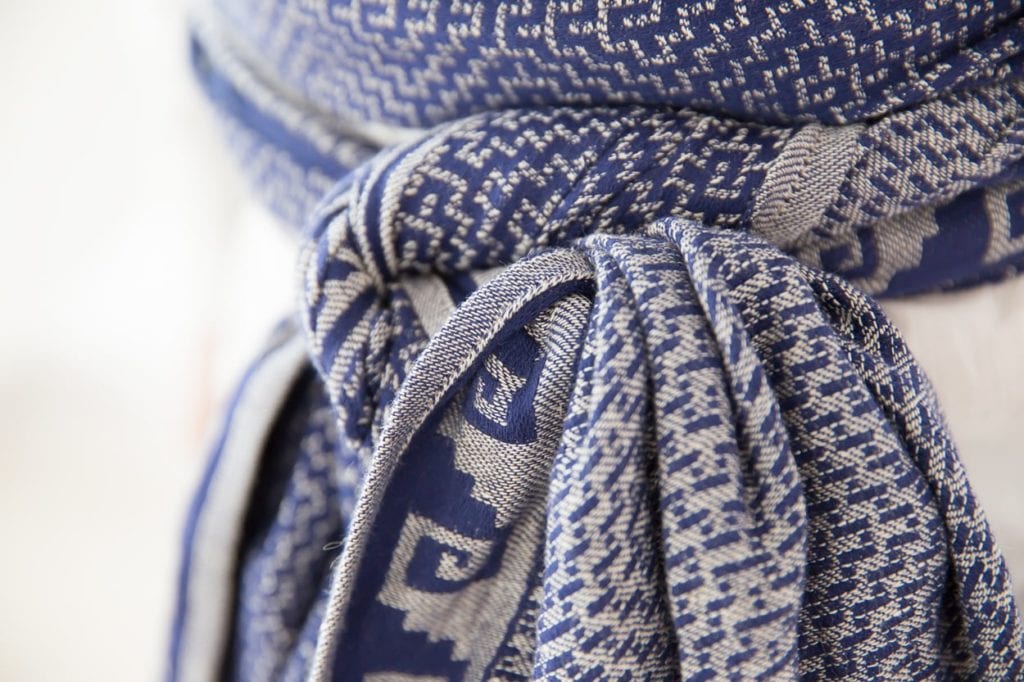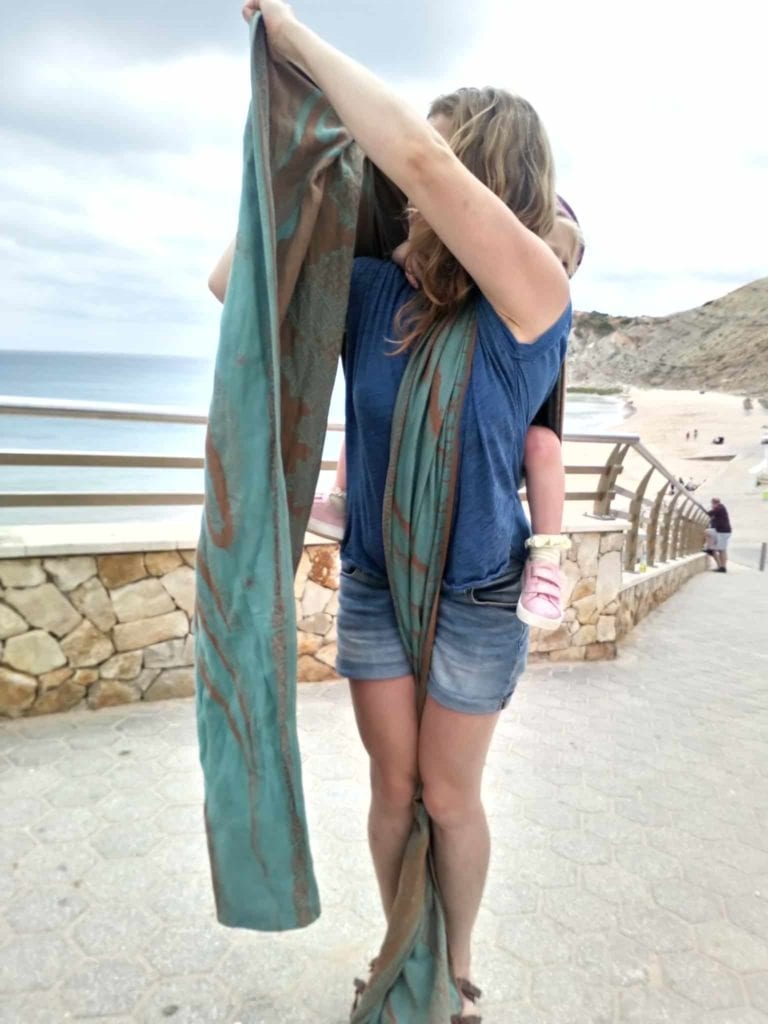Understanding and Caring for Wraps
‘Breaking In’ New Wraps
You might be told that a new woven wrap needs ‘breaking in’, in order for it to be comfortable to use.
We’ll explain what happens during the ‘breaking in process’, the science behind it, and why many Firespiral wraps don’t actually need breaking in, and are ready to use straight from the bag!
What does ‘breaking in’ mean?
Some brand new wraps can be stiff and difficult to use at first. ‘Breaking in’ the wrap will make it softer and easier to use. Commonly used ‘breaking in’ methods include ironing, braiding or knotting the wrap, sleeping/sitting on it and also using the wrap to carry babies in!
Not all wraps will need breaking in though, and some will need more than others, so why is this?
The science behind breaking in a wrap
Cloth is made up of individual yarns that have been woven together. These yarns are made up of individual fibres that have been spun into threads. The tighter the weave, the stiffer the fabric feels. Each wrap company will use their own combination of yarn thickness, weave style and tightness; this will determine how easy a wrap is to use from new and how much breaking in it requires

When you break in a wrap, you are wearing away some of the fibres from each individual thread through friction. This makes all the threads a tiny bit thinner, helping to create more room for movement in a tight weave and make every thread a little more flexible. You are encouraging the remaining fibres to smooth down and face the same way.
Technically, the wearing away of fibres through gentle abrasion is low level damage to the threads, but most of these fibres are completely expendable, and it is only the looser ones that are getting worn away. It is the same process that soften your jeans up over time. The knees of your jeans get the most wear and constant rubbing friction, and eventually that will thin the fabric to the point of it ripping, or wearing into holes. This is the same with wraps, although the process is far slower because they don’t receive the same level of friction stress, and the cloth is more robust. This means that the usable lifespan of a wrap is likely to be far, far greater than a pair of jeans (and will carry multiple children over that time), but like all cloth, your wrap won’t last forever.

Why do Firespiral wraps not need much breaking in?
We use a looser weave designed to give the warp and weft threads enough space to move right from the start. We choose plied and combed threads help to give thickness and strength to the cloth whilst allowing the fibres to be more flexible. This means that the cloth doesn’t really need to lose any fibres in order to function properly as a wrap!
The Firespirals that need a little breaking in are the ones with the naturally long fibres in single ply threads (hemp and linen both have a long staple fibre). This makes them a little less flexible than other natural fibres, and more likely to have extra bits caught up in the yarn when it is spun, which will easily wear away.
Thicker wraps or tighter weaves will require a bit more work to break in, but all should be usable straight from new, and the breaking in process just improves them!

What should I do to break in a wrap?
Anything that introduces friction to the cloth will help to break in a stiff wrap. Heat and water will also help the fibres to move in the same direction, soften and smooth down. Using your wrap to carry your baby naturally rubs the surface of the cloth and breaks a wrap in, but you can also try some of these other methods, especially if your new wrap isn’t a Firespiral and is proving too difficult to wrap with!
Washing and Ironing.
Washing a wrap will temporarily contract the cloth and make it feel tighter and stiffer, but the cloth will loosen up again as soon as you iron and start to use it. The washing process will help to remove any loose fibres and free up the others to reposition themselves. The heat from ironing helps to open up the weave and smooth down the fibres

Braiding
Braiding a wrap creates friction which wears away any loose fibres from the threads. It is also handy for making your wrap portable if you need to carry it with you.
Knotting and dragging
This is another process that uses the friction of the wrap surfaces rubbing against each other to remove loose fibres and soften up the weave. You can knot the wrap or use sling rings to drag the wrap through.
Threading through bannisters, chair backs, bed frames etc.
Weaving your wrap in and out of anything sturdy and then pulling it through will create resistance and friction.
Sitting/ sleeping on your wrap
An easy way to soften up cloth is to sit or sleep on it. If you’re doing the latter then you might want to lay the wrap under the bed sheets, especially if you practice safe co-sleeping
Let the kids play with it
Building dens, making swings & hammocks, dragging each other round the house on a wrap train- these are all great ways to break in a wrap and make great memories at the same time!



If you are a new babywearer looking for a wrap that will need no breaking in, then our mid weight alchemy wraps are perfect for you.
https://firespiralslings.co.uk/online-shop/golden-twilight-starmap-librarian/
https://firespiralslings.co.uk/online-shop/nights-watch-sunset-charters-moss/
https://firespiralslings.co.uk/online-shop/runnelstone-twilight-seafoam/
